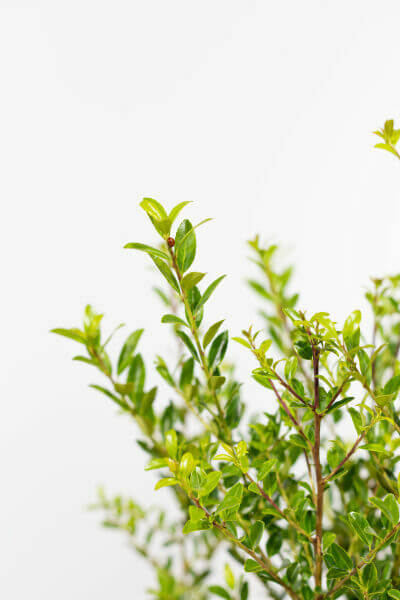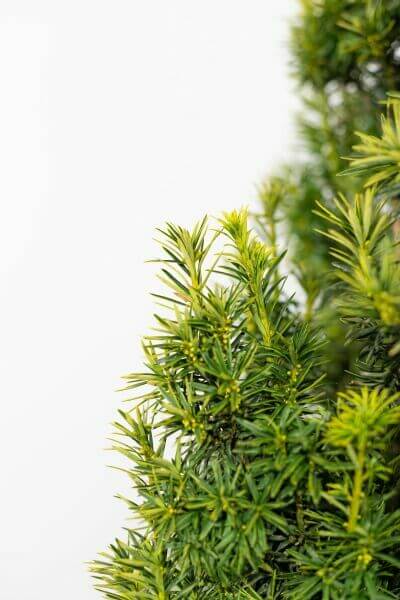Shade-tolerant Hedge Plants
Shade-tolerant Hedge Plants
Blog Article
Hedge Plants For Dense Screening
Boost your garden's attraction with rich hedge ranges such as Yew (Taxus), Thuja, Laurel, Photinia, and Bamboo, celebrated for their structural stability and environmental advantages.
Yew and Thuja offer evergreen protection and winter strength, while Laurel offers fast development and broad, fragrant leaves.
Photinia includes seasonal beauty with its dynamic red foliage, and Bamboo provides a low-maintenance, peaceful ambiance.
These hedges improve air quality, lower noise, and produce tranquil, personal spaces.
Correct planting, spacing, and maintenance make sure vigorous development and eco-friendly harmony.
Explore how these rich varieties can raise your garden's beauty and well-being.
Key Takeaways
Transform Your Garden With Lush Hedge Varieties
- Select Yew for its thick, evergreen development and unparalleled longevity.
- Select Laurel for its quick development and broad leaves, ensuring quick privacy.
- Select Photinia for its lively seasonal foliage, which turns a striking dark red.
- Use Bamboo for a low-maintenance, winter-hardy hedge with aesthetic appeal.
- Area plants 2-3 per meter and prune frequently for optimum growth and health.
Popular Hedge Plants
When transforming a garden with rich hedge varieties, it's important to consider popular hedge plants such as Yew, Thuja, Laurel, and Photinia due to their distinct qualities and benefits.
Yew (Taxus) is highly esteemed for its longevity and thick, green development, making it a prime option for enduring landscapes.
Thuja is kept in mind for its evergreen foliage and robust winter strength.
Photinia includes seasonal vibrancy with red leaves that darken with time, developing vibrant visual appeal.
Laurel provides quick growth and fragrant, broad leaves, ideal for fast personal privacy.
Furthermore, Bamboo is an outstanding choice for ambiance, providing a low-maintenance, winter-hardy choice that enhances the garden's aesthetic with its classy, swaying walking canes.
These choices deal with a range of horticultural needs and preferences.
Advantages of Garden Hedges
Garden hedges use a plethora of advantages, making them a valuable addition to any landscape. These natural barriers are cost-effective to carry out and offer substantial wind defense, boosting air flow and contributing to sound decrease. The dense foliage of hedges like Thuja and Beech makes sure privacy by obstructing presence, producing a serene and secluded environment.
Hedges likewise play an important role in microclimate guideline, providing a steady environment that fosters plant development and reduces temperature level variations. Their complex leaf structures filter pollutants, enhancing air quality and contributing to a much healthier garden ecosystem.
Furthermore, hedges master noise decrease, absorbing and deflecting acoustic waves to lower ambient noise levels. This double functionality of supplying both visual and acoustic personal privacy enhances the general harmony and aesthetic appeal of any garden.
Planting and Upkeep Tips
For an effective hedge, precise preparation of the planting location is essential. Make sure the soil has proper pH and drainage to support strong root advancement.
Area the plants appropriately for the selected types. Water the hedge frequently throughout its preliminary growth phase, changing as required with seasonal changes.
Carry out a systematic insect control and illness prevention strategy, utilizing organic or chemical treatments when necessary. Routinely check for aphids, mites, and fungal infections.
Apply mulch to retain wetness and reduce weeds. Seasonal pruning promotes dense growth and air circulation, important for plant health.
Following these standards will assist you cultivate a lively, well-maintained hedge that improves the charm of your garden.
Spacing and Cutting Standards
Spacing and Cutting Standards
Proper spacing and trimming are important for cultivating healthy, visually appealing hedges. Sufficient spacing guarantees each plant gets adequate nutrients, light, and air flow.
Follow these guidelines for ideal hedge maintenance:
- Spacing: Position hedge plants 2-3 plants per meter to motivate robust development.
- Pruning Strategies: Regular pruning is important for maintaining desired hedge height and shape. Trim brand-new development in summer season and cut down older wood during winter.
- Seasonal Care: Adjust cutting approaches and schedules according to seasonal requirements to make sure plant health.
- Hedge Height: Routinely screen and trim to maintain the wanted hedge height and attain uniform looks.
Following these steps will ensure your hedge thrives, boosting both the appeal and performance of your garden.
Selecting the Right Hedge
Choosing the Right Hedge
Picking the suitable hedge involves examining factors such as mature height, foliage density, and ecological strength. Effective hedge plant choice needs comprehending each types' development qualities and site-specific versatility.
For example, Yew (Taxus) uses outstanding longevity and thick growth, while Thuja is significant for its winter season resilience. In addition, thinking about maintenance requirements is vital; fast-growing species like Laurel or Privet need routine trimming, whereas low-maintenance alternatives like Bamboo or Ivy might be more effective for those seeking very little upkeep.
Ecological factors such as soil type, light schedule, and moisture conditions must also direct the selection procedure. This careful method makes sure the chosen hedges will prosper, providing both functional and aesthetic advantages to the garden landscape.
Delivery and Planting Recommendations
To guarantee your hedge plants thrive, they must be provided by specialized couriers and planted quickly upon arrival.
Follow these necessary steps for successful planting:
- Soil Preparation: Enhance the soil with organic matter to improve drainage and nutrient material.
- Planting Depth: Develop a trench twice the width and equal to the depth of the root ball.
- Watering Strategies: Water thoroughly after planting, keeping the soil consistently wet however not saturated.
- Mulching: Use a layer of mulch to retain moisture and reduce weeds.
Consumer Support and Service
Provided the vital function of prompt assistance in horticultural pursuits, our client assistance team is offered 6 days a week through telephone, e-mail, and social media to offer expert recommendations and promptly deal with any issues. Their devotion to quick action times ensures customer satisfaction by dealing with inquiries associated with plant health, optimum planting approaches, and maintenance schedules.

-----------------
Telephone
Within two days
This comprehensive assistance system, enhanced by an excellent 9.3/ 10 customer rating, highlights our commitment to improving the gardening experience for every single client.
Frequently Asked Questions
How Long Does It Take for Hedge Plants to Establish?
Hedge plants typically require one to three years to become fully established, with the exact duration varying by species and growing conditions.
Efficient care during this crucial period is important for robust growth. Consistent watering, vigilant weed control, and appropriate fertilizer application are pivotal in promoting strong root advancement.
For instance, fast-growing types like Laurel might establish faster, while slower-growing varieties such as Yew may take longer. Thorough maintenance accelerates the facility procedure, resulting in dense and healthy hedges.
What Are the very best Hedge Plants for Privacy?
The concern of the very best hedge plants for privacy involves examining evergreen and deciduous choices.
Evergreen hedges like Thuja, Laurel, and Cypress offer year-round coverage, making sure constant privacy.
On the other hand, deciduous hedges such as Beech provide seasonal privacy, shedding leaves in colder months.
Key upkeep suggestions for privacy hedges consist of regular trimming, fertilizing in spring, and appropriate spacing-- usually 2 to 3 plants per meter.
In addition, consistent watering and diligent weed elimination are important for promoting healthy, dense development.
Can Hedge Plants Draw In Wildlife to My Garden?
Yes, hedge plants can attract wildlife to your garden by supplying important benefits like shelter, food, and nesting websites, thereby boosting local biodiversity. For example, yew, holly, and laurel are excellent for bring in birds, while ivy supports a variety of pests.
However, it is very important to note that there are some disadvantages, such as increased maintenance to manage insects and regular maintenance. Thoroughly choosing and maintaining hedge ranges can help balance these advantages and drawbacks, eventually fostering a sustainable and vibrant community in your garden.
Exist Any Blooming Hedge Plants Available?
Yes, there are flowering hedge plants available that can improve the beauty of your garden.
For instance, Elaeagnus, also called Olive Willow, produces aromatic white flowers in the fall, including a touch of sophistication.
Photinia, another popular choice, showcases vibrant red leaves that develop into an abundant green, developing a dynamic visual effect throughout the seasons.
To guarantee these plants prosper, it's important to practice proper pruning techniques and seasonal maintenance, such as trimming new growth in the summer season and cutting back in the winter.
These measures will help preserve the health and aesthetic appeal of your blooming hedges.
How Do I Avoid Pests in My Hedge Plants?
To prevent pests in hedge plants, utilize natural insect control techniques and preserve appropriate hedge care. Present helpful pests like ladybugs, which victimize damaging insects, to produce a well balanced community.
Routinely examine your hedges for signs of invasion and promptly get rid of any afflicted parts to avoid the spread. Guarantee the health of your hedges by applying balanced fertilizers and providing adequate water.
Make use of mulching to maintain soil wetness and appropriate spacing to decrease plant stress and promote robust growth. These practices jointly assist in lessening insect issues and keeping a healthy hedge.
Conclusion
In essence, picking the best hedge varieties such as Yew, Thuja, and Laurel can transform any garden into a serene sanctuary. These plants provide year-round plant, improve aesthetic appeal, and deal useful benefits like noise decrease and wind protection.
Proper planting strategies, precise spacing, consistent watering, and seasonal cutting are crucial for optimal development.
Reputable delivery services and professional customer assistance ensure a seamless experience from purchase to planting, making it simpler than ever to raise your outdoor area.
Garden hedges provide a multitude of benefits, making them an Browse this site important addition to any landscape. These natural barriers are cost-efficient to execute and offer significant wind defense, boosting air flow and contributing to sound reduction. The thick foliage of hedges like Thuja and Beech ensures personal privacy by obstructing exposure, creating a remote and serene environment.

Pruning Techniques: Regular pruning is necessary for preserving desired hedge height and shape. Trim brand-new growth in summer and cut back older wood throughout winter.
Report this page